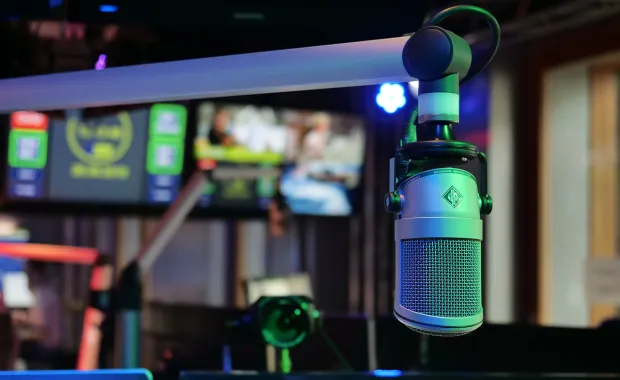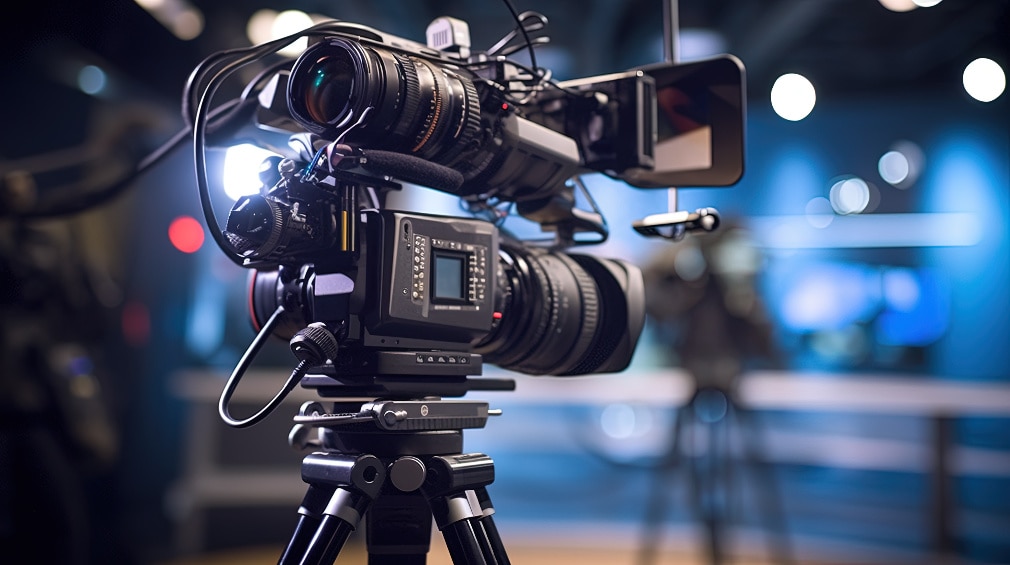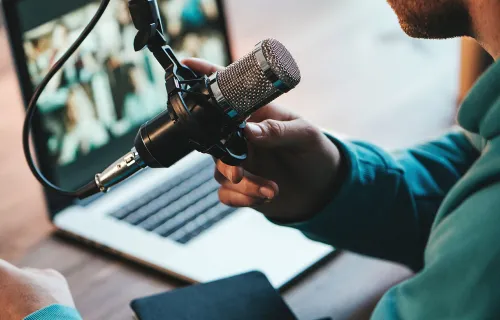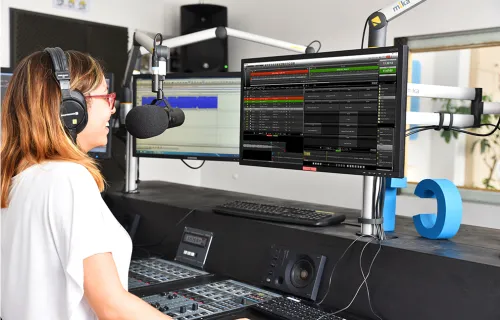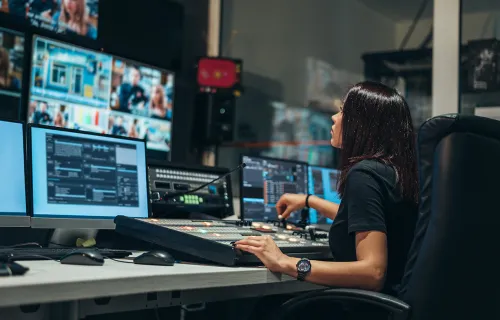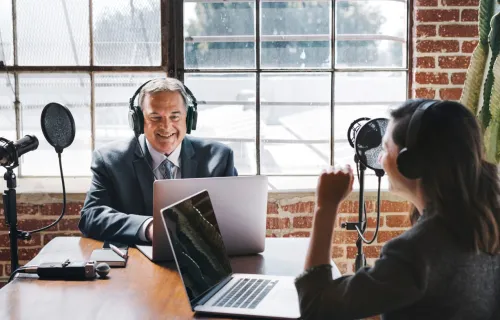Viura is a software tool for editors and presenters providing intelligent radio studio camera control. The solution is entirely manufacturer-independent through a combination of video hardware from Blackmagic Design and our specially-designed control software. This means it's compatible with other dira radio solutions as well as third-party playout and production solutions.
- Automatic operations, no additional studio staff required
- Event-controlled camera changes (e.g., by microphone input level, fader starts, etc.)
- Displays individual logos and texts
- Automatic background recording
- Workflow can be implemented with any mixing console using Ember+
- Integrated touch interface
- Easy to use
- Up to 16 image sources per studio
Triggered by microphone-level detection, fader starts or key actions, Viura automatically switches to the corresponding configured studio camera. Packaging elements, such as lower thirds or broadcast logos, are generated automatically and can be displayed automatically. Additional overlays, images or video sequences can be imported from third-party software.
Viura gives the user control over the entire workflow via mixing consoles that are compatible with the Ember+ protocol. It features a web interface that operates independently of the mixing console. In addition, Viura offers automatic video recording or at the touch of a button.
- Required hardware
-
- Blackmagic ATEM vision mixer
- Cameras with SDI output
- Ember+ capable audio mixer (e.g., LAWO or DHD)
- Video encoder for recording (e.g., AJA Helo)
- Standard PC for the CGI control software
- Workflow features
-
- Prepare broadcast-related templates via a web interface
- Allows for configuration of which cameras to be used for transitions, cuts and branding—depending on broadcast type
- Ability to select the required template via the studio console (cameras, transitions, cuts, and branding)
- Intelligent camera selection via mixer events such as level detection, fader start, or key operation
- Video playout for audio contributions (e.g., music videos or productions)
- Optional displaying of cover images or text information
- Parallel video recording for archiving and downstream use via social media
- Ability to record video sum, clean feed and individual camera signals
